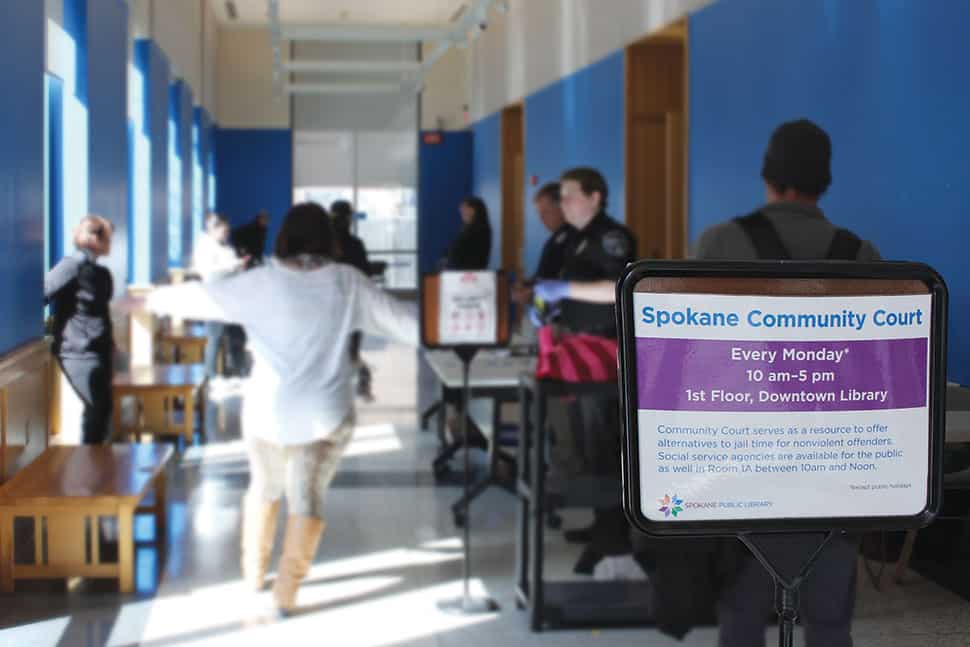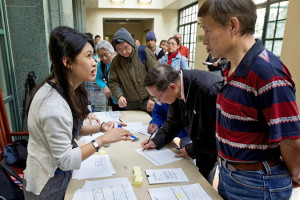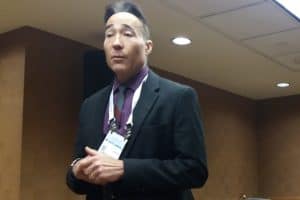
Crimes like murder or arson require a traditional court of justice. Crimes like graffiti or shoplifting don’t have to.
That’s the reasoning behind the community-court model, which has been around since the early 1990s. Designed with restorative justice in mind, community courts typically focus on nonviolent cases. The legally binding sentences they issue usually include community service as well as a commitment on the part of the defendant to get help, such as drug treatment or other health care.
Still, when Andrew Chanse, executive director of Spokane (Wash.) Public Library, got a phone call in 2013 requesting that his library host a community court, he wasn’t sure what to think.
“When the judge asked, I just didn’t see it at first,” Chanse says. But when he learned that onsite social-service providers were a key component of the community-court model, he began to see what libraries had to offer in this regard: “I said, ‘Well, that’s information—not in a book on a shelf, but it’s information, and people really need it.’”
Spokane Public Library’s downtown branch began hosting a community court in December 2013, and it now sees about 1,000 participants annually. In Chanse’s view, information isn’t the only thing the library provides. “When you walk into a courthouse, there isn’t necessarily a sense of hope or opportunity,” says Chanse. “The library helps provide that. It’s open to everyone, and there isn’t the stigma that a courthouse might have. It’s a welcoming place.”
Resources on tap
Community courts typically consist of two rooms: one in which a judge holds court, and one that acts as a community resource center (CRC), in which social-service providers help defendants and members of the public with counseling, housing, and other needs. Those providers might include public health workers, technical schools or community colleges, health care nonprofits, and temp agencies looking for workers.
At King County (Wash.) Library System (KCLS)—which has hosted a community court in its Redmond branch since April of last year—the CRC includes about 45 providers, all of which are available to the general public as well as to defendants. “You don’t have to have a criminal charge,” says Francis Adewale, a public defender for the city of Spokane. In fact, he adds, “twice as many people are accessing the library to get the services than are charged.”
The Redmond library–court partnership appears to be a win in other ways as well. The court has processed almost 100 cases; only four of those defendants have had to return to the traditional court system, according to Ericka Cooley, the city’s community court coordinator. And, she says, “community members are happy because they can get information—and the service providers are happy because they know there will be a full house.”
Where to start
Which types of defendants appear in community court? That’s up to each community to decide. Spokane’s community court handles cases of theft, trespass, and malicious mischief, among others, according to Judge Mary Logan, who hears cases at the court in Spokane Public Library’s downtown branch.
Hosting a community court increases a library’s workload somewhat, says Dan Shaffer, adult services librarian at KCLS’s Redmond branch. While the library is not responsible for additional security on court days (the city provides that), library staff set up the rooms for the court and the CRC. The library also provides a staff representative and a technology volunteer, who helps patrons with their phones and other devices, for the CRC.
Libraries that don’t have the space or the staff to host a court on site can still participate in the community-court model. Since 2015, Seattle Public Library (SPL) has staffed a service point in the Seattle Municipal Court’s Community Resource Center twice a week for two hours at a time, registering people for library cards, waiving or lowering fines, and providing reference assistance.
Malik Moore, SPL assistant manager for borrower services, says that in a typical week, 40 to 50 people take advantage of the library’s presence at the court’s CRC. Not only are more patrons able to access library services this way, Moore explains, but library workers get to spread their wings a bit as well: “We wanted to get more from a talented and dedicated staff, to allow them to utilize their skills in a nonlibrary environment.”
Libraries that are unable to host a community court or staff an external service point have another option, Cooley points out: establishing their own CRC. She calls it “the first step to creating a community court—getting those agencies together in one place to offer help.”
Whatever a particular library–court partnership looks like, it’s likely to have lasting positive effects on the community.
“Sometimes people do more community service than we ask them to do,” comments Adewale. Not only that, but some former offenders “come by just to say, ‘I’m still doing well,’” says Logan. “It is truly extraordinary what happens down at the library.”


